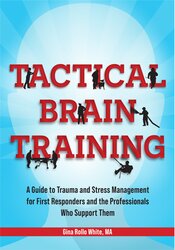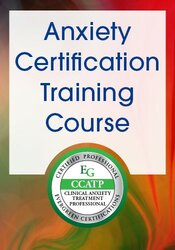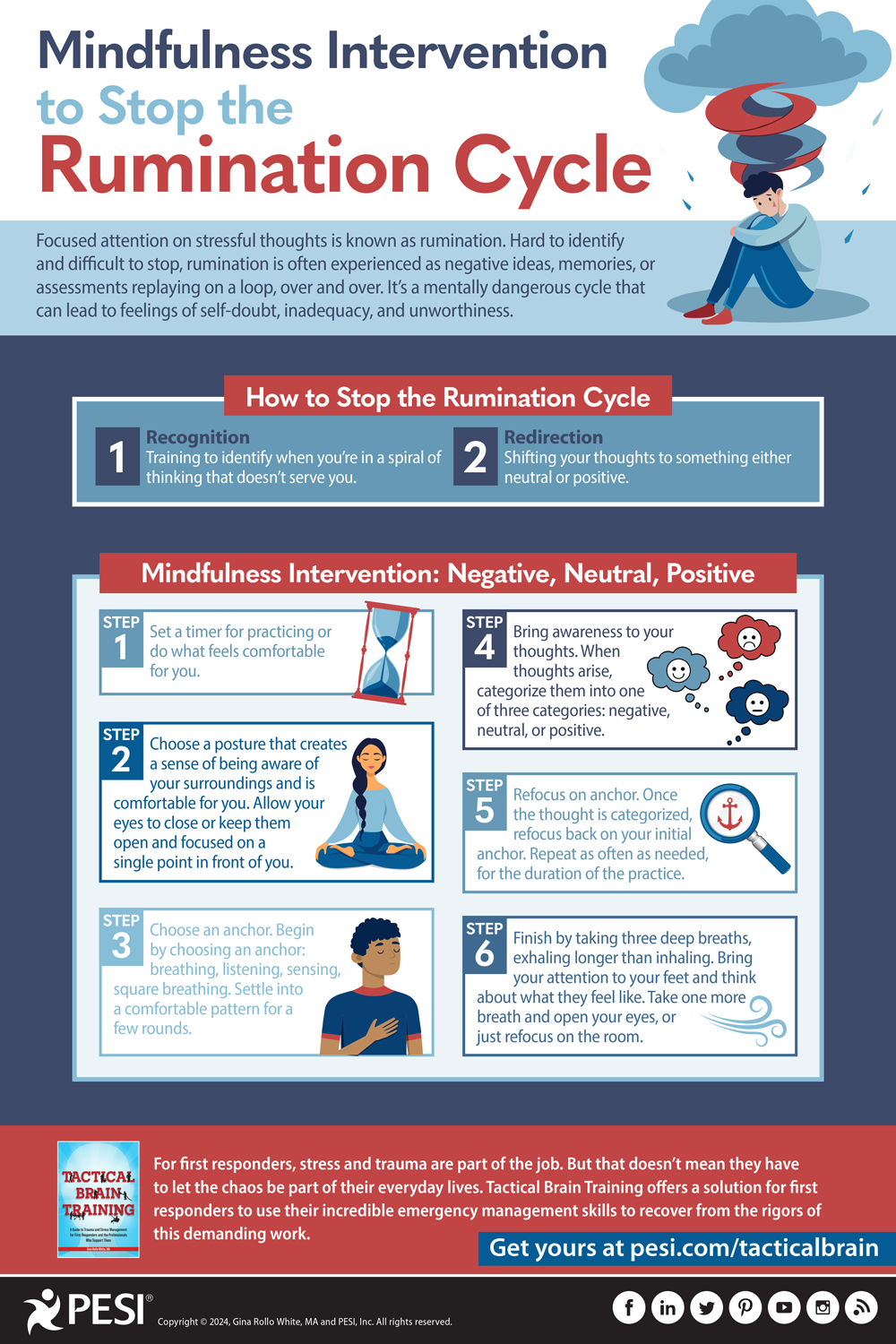Help Clients Develop Awareness of Spiraling Negative Thinking with This Exercise
Free infographic from Tactical Brain Training

One night, police officers Diane and Brian were called to a robbery in progress. They arrived on scene to a dimly lit two-story house in a quiet neighborhood. As they entered the house through the back door, the suspect immediately saw them, pulled out a gun, and aimed it directly at them. On instinct and training, one of the officers pulled their side arm and fired, hitting the suspect.
According to protocol, when an officer fires their service weapon on the job, they are automatically taken off the streets during the internal review process. Over the next four months, Diane and Brian had a lot of downtime, doing paperwork and other desk duty tasks. During this time, both officers found themselves repeatedly contemplating the incident. Because they were unable to discuss the case during the investigation process, both were left with their own memories, replaying every aspect of how it unfolded and thinking about how they could have done things better, criticizing, questioning, judging, and doubting their own actions.
Focused attention on stressful thoughts is known as rumination. Hard to identify and difficult to stop, rumination is often experienced as negative ideas, memories, or assessments replaying on a loop, over and over. It’s a mentally dangerous cycle that can lead to feelings of self-doubt, inadequacy, and unworthiness. In addition, rumination can intensify feelings of stress, triggering the body to secrete cortisol and inhibiting logic and rational thought. With this decrease in your ability to think clearly, you’re left to simply focus on the negative thoughts.
The rumination cycle can be particularly hard to interrupt when it’s set off by a traumatic experience. Anytime something out of the ordinary occurs, certain aspects of the situation become more ingrained in our memory. While we tend to not remember mundane everyday occurrences like what we had to eat last night or what we watched on TV last week, we can recall events like a painful accident, a dangerous encounter, or an argument with a partner in sharp detail, particularly the sensory details of the experience (sights, sounds, smells), as well as our split-second thoughts and emotions from one moment to the next. At the same time, trauma can make other parts of the memory harder to recall, like what order things happened in, or why we made certain decisions or took certain actions. This is because trauma, being an emergent situation, activates our survival brain while turning off our thinking brain. Once the experience is over, we’re left to piece together a fragmented collection of images and sense memories.
The effort to make logical sense out of these fragmented memories only reinforces our attention to negative thoughts, usually about ourselves. Instead of dwelling on the fact that we survived or all the ways we did our best to manage the situation, we keep replaying our sensations of danger, self-judgment, and shame. It feels like “learning” from the experience, but in fact, it’s only magnifying our negative feelings and making the negative thought cycle even harder to manage.
Rumination can even become dangerous when those negative thoughts spill over into other areas of life. The negative self-worth it fosters may progress to avoidance of processing the experience and our emotions around it. Without adequate processing of trauma, it becomes even easier for the brain to make potentially destructive leaps in logic. Analyses and conclusions about the experience may start with a basis in reality, only to spiral rapidly into conjecture.
These negative feelings toward ourselves can lead us down a slippery slope of behavioral habits like depression, anxiety, worthlessness, and even isolation—all things that make us more prone to bad judgment calls, tactical mistakes, and harmful behavior on and off the job. Instead of healing and learning from the traumatic situation, we end up guaranteeing the result that brings us the most fear and shame.
There are two parts to stopping the rumination cycle:
With repeated practice over time, this awareness will extend into your interactions with the world. Let’s say you’re in a conversation with someone, and their physical cues or facial expression send you down a path of negative self-talk: They don’t understand me; they are so defensive; why do I even try? Thanks to the practice you’ve been doing, your brain remembers what “negative talk” feels like, and your training kicks in: You remember to redirect your thoughts and listen to sounds, take a breath, feel the ground beneath your feet, and bring yourself back into the present moment.
According to protocol, when an officer fires their service weapon on the job, they are automatically taken off the streets during the internal review process. Over the next four months, Diane and Brian had a lot of downtime, doing paperwork and other desk duty tasks. During this time, both officers found themselves repeatedly contemplating the incident. Because they were unable to discuss the case during the investigation process, both were left with their own memories, replaying every aspect of how it unfolded and thinking about how they could have done things better, criticizing, questioning, judging, and doubting their own actions.
Focused attention on stressful thoughts is known as rumination. Hard to identify and difficult to stop, rumination is often experienced as negative ideas, memories, or assessments replaying on a loop, over and over. It’s a mentally dangerous cycle that can lead to feelings of self-doubt, inadequacy, and unworthiness. In addition, rumination can intensify feelings of stress, triggering the body to secrete cortisol and inhibiting logic and rational thought. With this decrease in your ability to think clearly, you’re left to simply focus on the negative thoughts.
The rumination cycle can be particularly hard to interrupt when it’s set off by a traumatic experience. Anytime something out of the ordinary occurs, certain aspects of the situation become more ingrained in our memory. While we tend to not remember mundane everyday occurrences like what we had to eat last night or what we watched on TV last week, we can recall events like a painful accident, a dangerous encounter, or an argument with a partner in sharp detail, particularly the sensory details of the experience (sights, sounds, smells), as well as our split-second thoughts and emotions from one moment to the next. At the same time, trauma can make other parts of the memory harder to recall, like what order things happened in, or why we made certain decisions or took certain actions. This is because trauma, being an emergent situation, activates our survival brain while turning off our thinking brain. Once the experience is over, we’re left to piece together a fragmented collection of images and sense memories.
The effort to make logical sense out of these fragmented memories only reinforces our attention to negative thoughts, usually about ourselves. Instead of dwelling on the fact that we survived or all the ways we did our best to manage the situation, we keep replaying our sensations of danger, self-judgment, and shame. It feels like “learning” from the experience, but in fact, it’s only magnifying our negative feelings and making the negative thought cycle even harder to manage.
Rumination can even become dangerous when those negative thoughts spill over into other areas of life. The negative self-worth it fosters may progress to avoidance of processing the experience and our emotions around it. Without adequate processing of trauma, it becomes even easier for the brain to make potentially destructive leaps in logic. Analyses and conclusions about the experience may start with a basis in reality, only to spiral rapidly into conjecture.
These negative feelings toward ourselves can lead us down a slippery slope of behavioral habits like depression, anxiety, worthlessness, and even isolation—all things that make us more prone to bad judgment calls, tactical mistakes, and harmful behavior on and off the job. Instead of healing and learning from the traumatic situation, we end up guaranteeing the result that brings us the most fear and shame.
There are two parts to stopping the rumination cycle:
- First comes recognition: training to identify when you’re in a spiral of thinking that doesn’t serve you. When you’re having a thought that is accompanied by discomfort or signs that you’re moving out of your window of tolerance, ask yourself, Is this a thought I have had before? Am I hyperfocused on this? If the answer is yes, it’s time to interrupt and redirect.
- Next comes redirection: shifting your thoughts to something either neutral or positive. By bringing curiosity and acceptance to the negative thoughts that occur in the wake of trauma, non-judgmental attention offers a moment of reprieve in which we can think about our thoughts, rather than attach to them and allow them to define us. This ability makes us less reactive to negative thought spirals when they arise.
With repeated practice over time, this awareness will extend into your interactions with the world. Let’s say you’re in a conversation with someone, and their physical cues or facial expression send you down a path of negative self-talk: They don’t understand me; they are so defensive; why do I even try? Thanks to the practice you’ve been doing, your brain remembers what “negative talk” feels like, and your training kicks in: You remember to redirect your thoughts and listen to sounds, take a breath, feel the ground beneath your feet, and bring yourself back into the present moment.
Mindfulness Intervention: Negative, Neutral, Positive
This practice helps develop awareness regarding spiraling negative thinking cycles. The awareness created then promotes more emotionally balanced thinking. By disrupting negative thought cycles, attention is then focused on identifying what the thought is, rather than engaging in the thought and becoming consumed by it. This allows the mind to naturally disengage, developing more emotionally balanced thoughts.How to Practice
Set a timer for practicing or do what feels comfortable for you.- Begin by choosing a posture that is comfortable for you. Either sit in a way that is comfortable or stand against a wall. You should have a feeling of sitting or standing tall, in a way that creates a sense of being aware of your surroundings. Allow your eyes to close or keep them open and focused on a single point in front of you.
- Choose an anchor. Begin by choosing an anchor: breathing, listening, sensing, square breathing. Settle into a comfortable pattern for a few rounds.
- Negative, neutral, or positive identification. Begin to bring awareness to your thoughts. When thoughts arise, categorize them into one of three categories: negative, neutral, or positive. Negative thoughts can be those that are distressing or challenging, neutral thoughts are more mundane and innocuous, and positive thoughts are those that generate joy or contentment.
- Refocus on anchor. Once the thought is categorized, refocus back on your initial anchor. Repeat as often as needed, for the duration of the practice.
- Three closing breaths. Once you have practiced for a comfortable amount of time, take three deep closing breaths, exhaling longer than inhaling. Bring your attention to your feet on the ground and think about what they feel like. Take one more breath and open your eyes, or just refocus on the room.
Book:
Tactical Brain Training: A Guide to Trauma and Stress Management for First Responders and the Professionals Who Support Them
Tactical Brain Training: A Guide to Trauma and Stress Management for First Responders and the Professionals Who Support Them

First responders – law enforcement, firefighters, emergency medical professionals, military personnel, and more – spend each day confronting stress and trauma head-on. Rarely is there time to process and recover from the turmoil and violence they encounter day after day. It doesn’t help that first responder culture encourages a “get on with it” attitude, offering limited resources for the internal struggle that builds up over time.
It doesn’t have to be this way.
Tactical Brain Training offers a solution for first responders to use their incredible emergency management skills to recover from the rigors of this demanding work. Developed by Gina Rollo White, a therapeutic mindfulness expert with over 10 years in the first responder world, this first-of-its-kind guidebook provides proven, sustainable strategies for regulating stress and trauma in real time and following the emergent event.
It doesn’t have to be this way.
Tactical Brain Training offers a solution for first responders to use their incredible emergency management skills to recover from the rigors of this demanding work. Developed by Gina Rollo White, a therapeutic mindfulness expert with over 10 years in the first responder world, this first-of-its-kind guidebook provides proven, sustainable strategies for regulating stress and trauma in real time and following the emergent event.
Online Course:
Anxiety Certification Training
Anxiety Certification Training

This powerful 2-Day Anxiety Certification Training brings you the latest and most up-to-date anxiety interventions and techniques to help you break through tough roadblocks with your clients. You’ll learn from 12 of the biggest experts in the field including world-renowned keynotes Jud Brewer, PhD, and Elliott Connie, MA, LPC. These leading-minds on anxiety will guide you through the latest research on anxiety and how it has changed in a post-pandemic society, plus give you interventions that use easy to digest neuroscience and evidence-based practices like ACT, EMDR, and SFBT to treat even the most anxious client.
You’ll learn new ways to work with BIPOC clients, as well as those whose anxiety is exacerbated by trauma, OCD, tech-related stressors, and more! Best of all, upon completion of this training, you'll immediately qualify to become a Certified Clinical Anxiety Treatment Professional (CCATP) with Evergreen Certifications!
You’ll learn new ways to work with BIPOC clients, as well as those whose anxiety is exacerbated by trauma, OCD, tech-related stressors, and more! Best of all, upon completion of this training, you'll immediately qualify to become a Certified Clinical Anxiety Treatment Professional (CCATP) with Evergreen Certifications!
Meet the Expert:
Gina Rollo White, MA, is the founder of Mindful Junkie and is broadly recognized as a leading therapeutic mindfulness expert and instructor for first responders and veterans, teaching stress and trauma management using mindfulness interventions. She provides in-agency and in-department workshops across the US using the curriculum she developed. Tactical Brain Training®, Mindfulness for First Responders. She is also a speaker at major first responder conferences across the country, such as International Association of Chiefs of Police, COG Fire Health and Safety Symposium, Southwest Women in Law Enforcement, and Washington DC, Grand Rounds. She lives in the Washington DC, area.
Learn more about her educational products, including upcoming live seminars, by clicking here.
Learn more about her educational products, including upcoming live seminars, by clicking here.




